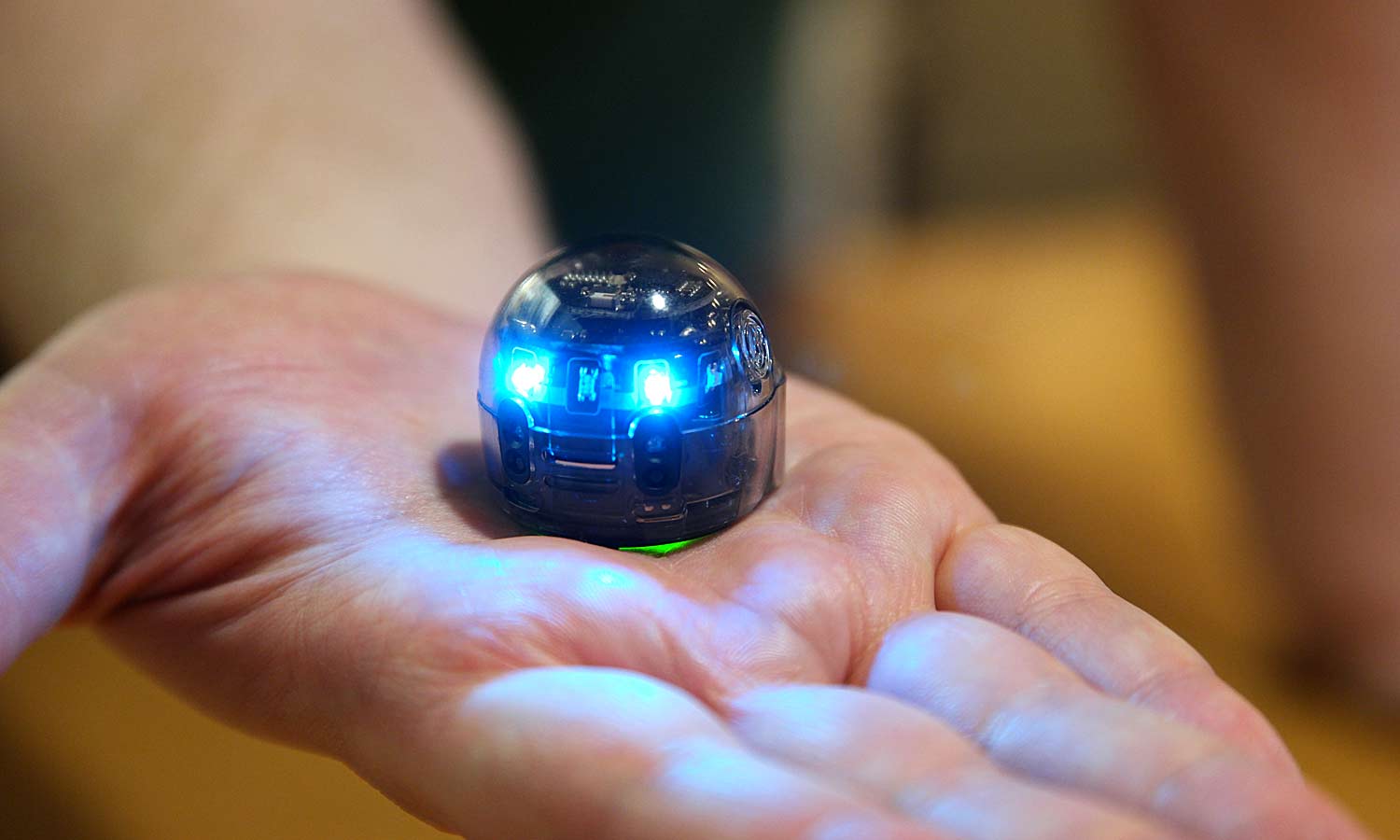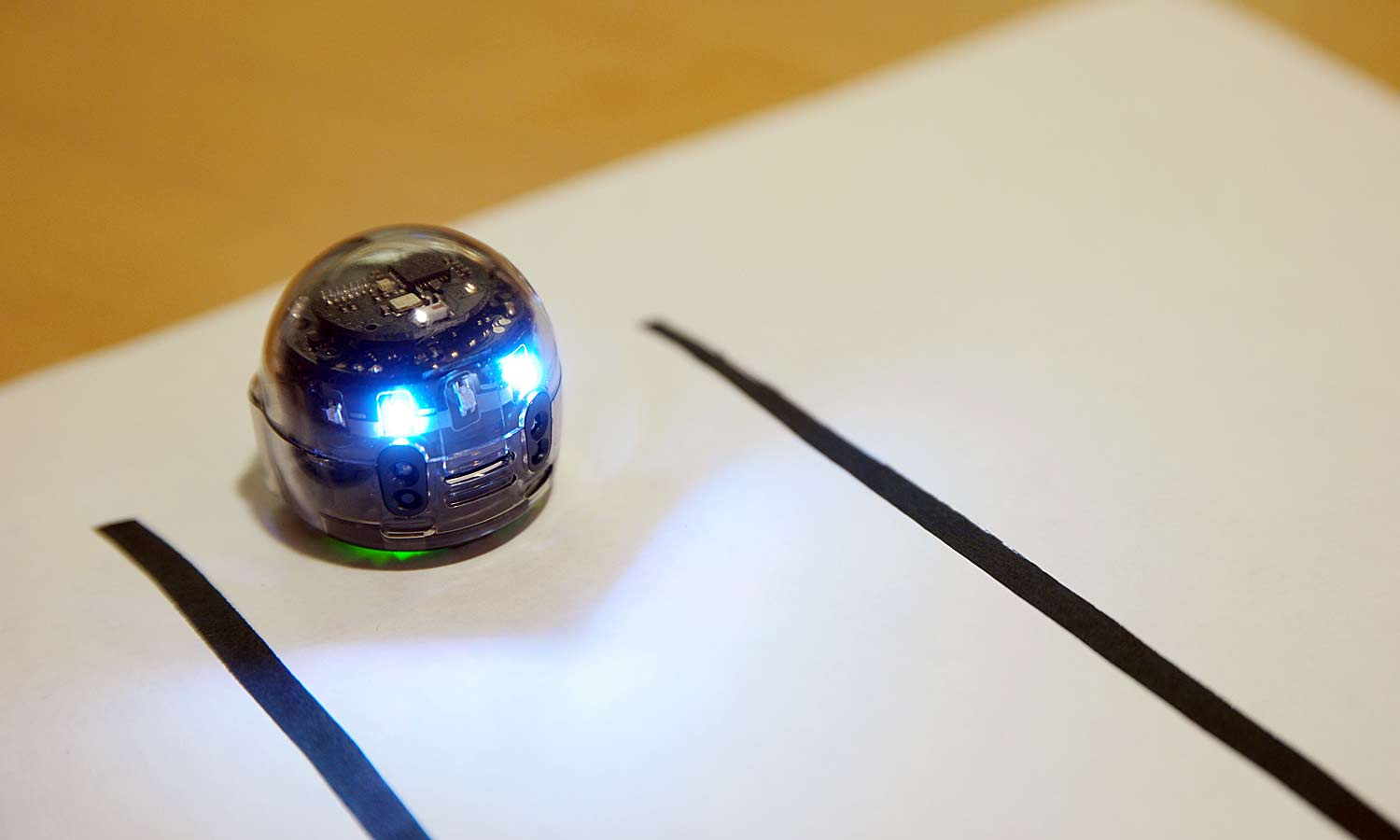Ozobot Evo Robot Can Socialize, Teach You To Program
This tiny bot can send messages to your friends around the world or help you learn about coding concepts.
You can get an autonomous vacuum to clean your floor or a mechanical nanny to tell stories to your kids, so why not a robot that helps you socialize with friends?
Due out in November for $100, the Ozobot Evo can help you teach you to program, play games and send messages to friends anywhere in the world.
About the the size of a stack of two stacks of quarters, the 1.2 x 1.3-inch dome-shaped Evo is an upgrade over the Ozobot Bit, an identical-looking $50 robot that teaches kids about programming and logic by following a series of colored lines and dots you draw (or place) beneath it.
The 0.8-ounce Evo works with the same paper-and-ink-based system, but adds in Bluetooth connectivity and a smartphone app that lets you not only control your robot but also send alerts to your friends' bots.

I spent a few hours playing with the Ozobot Evo this week, with intriguing but mixed early results. I received an early beta version of the smartphone app, which allowed me to drive the robot around using an on-screen joystick, make the lights blink in one of five preloaded patterns and cause it to emit one of five preloaded sounds.
I was also able to record any my movements and then play them back. Though I couldn't test the social features in my beta app, I saw some of them working during a briefing with Evollve, the company which makes Ozobot.
As I watched, CEO Nader Hamda demonstrated sending and receiving a message on his phone. When he received the message, his Evo began to do a little dance, complete with lights and sounds. Hamda said these messages could help cheer someone up or otherwise communicate your feelings. Right now, the Evo only has a small set of beeping sounds and light-up patterns, but he told us that users would be able to add their own.
Hamda also told us that the final version of the app, which will be available on iOS and Android around launch time in November, will add games and some cute features like the ability to ask your robot for advice. He gave the example of a teenager asking the Evo whether a girl would say yes to a promposal.
However, in my tests, the aspect of the Ozobot Evo that is most interesting is the paper code feature it shares with the Bit. The device comes with a set of markers in black, red, green and blue colors. When I drew a straight black line on a blank piece of white paper and put the Evo on top of it, it beeped and followed the path I set.
MORE: Meet Zenbo, a Family Robot Straight Out of the Jetsons
When you draw a series of three colored circles -- the company calls them OzoCodes -- in the robot's path, it reacts accordingly. For example, red/blue/red means to pause for three seconds before proceeding and green/black/red means to turn left. I found that the Evo recognized these patterns pretty well though, a couple of times it appeared to skip over them (perhaps it was how I drew them).
Ozobot.com has a ton of information, including a series of tutorial videos that show you how to program the robot. However, I wish it was easier to find a list of the Ozocodes. There was no documentation in the box and, in order to find a page with a list of the different color patterns and what they do, I had to use Google, because it wasn't easy to locate via the site's navigation. This list should come with the product.

Evollve markets the Bit toward kids and has a section of its site that's filled with PDF lesson plans. Hamda said the company has already sold its education kits with the Bit to around 2,000 schools, who use to teach the students about programming. The Evo is also good for this purpose as it offers all the same capabilities and throws in an infrared sensor that keeps it from bumping into objects.
When I stuck my finger in front of the Evo while it was following a line on paper, the robot stopped and waited for me to withdraw the obstruction. However, when I was using the smartphone app to control the robot, it ran right into my finger.
In addition to controlling the robot with OzoCodes, users can program the bot using a web tool and scripting language called OzoBlockly. At OzoBlockly.com, users can write their programs by dragging some simple logic blocks around the screen and then can save these instructions to the cloud. To run the programs, you press the bottom of the robot against a white circle on the computer screen and the web tool passes the data to its sensors by flashing different colors. Hamda said, you'll also be able to code in JavaScript eventually.
The Ozobot Evo isn't meant for serious work, but it does provide a fun way to learn about programming concepts, if not about real-world coding. We look forward to seeing how its functionality evolves as the product moves closer to launching in November.
Sign up to get the BEST of Tom's Guide direct to your inbox.
Get instant access to breaking news, the hottest reviews, great deals and helpful tips.
